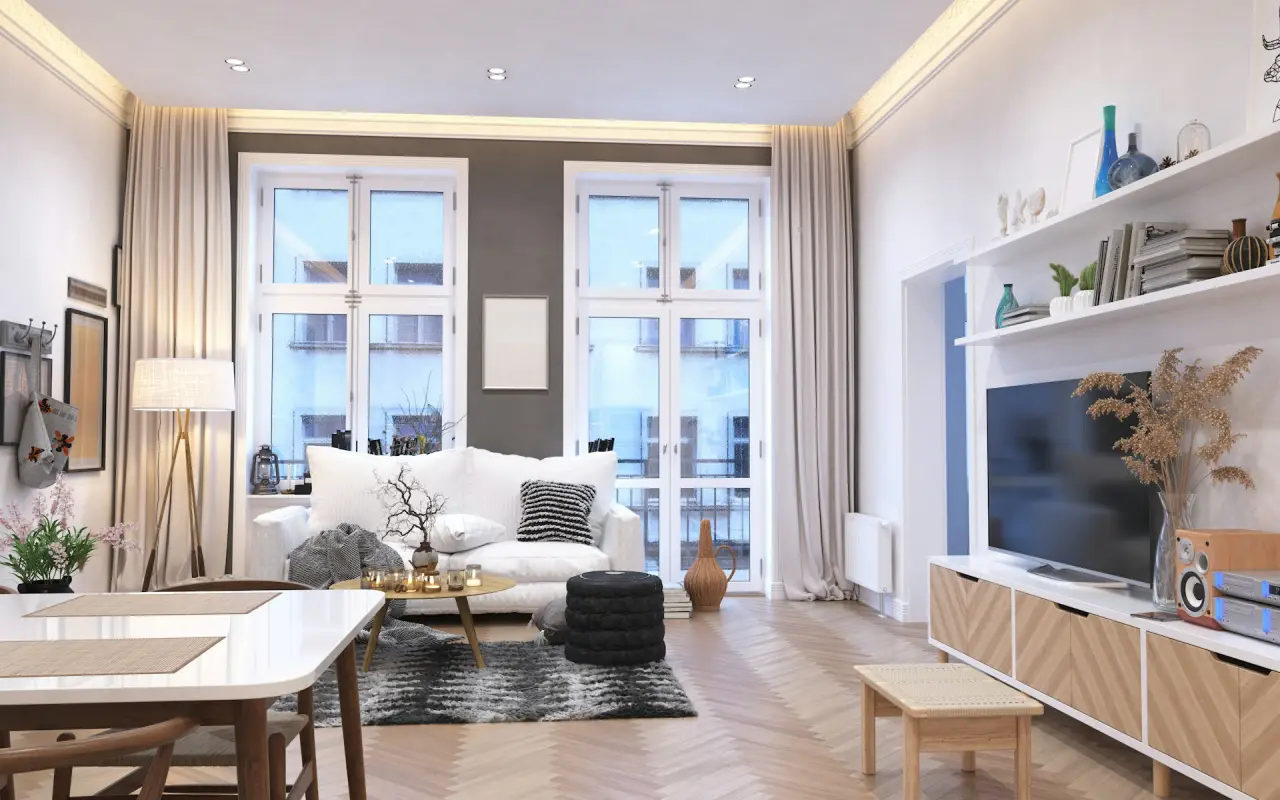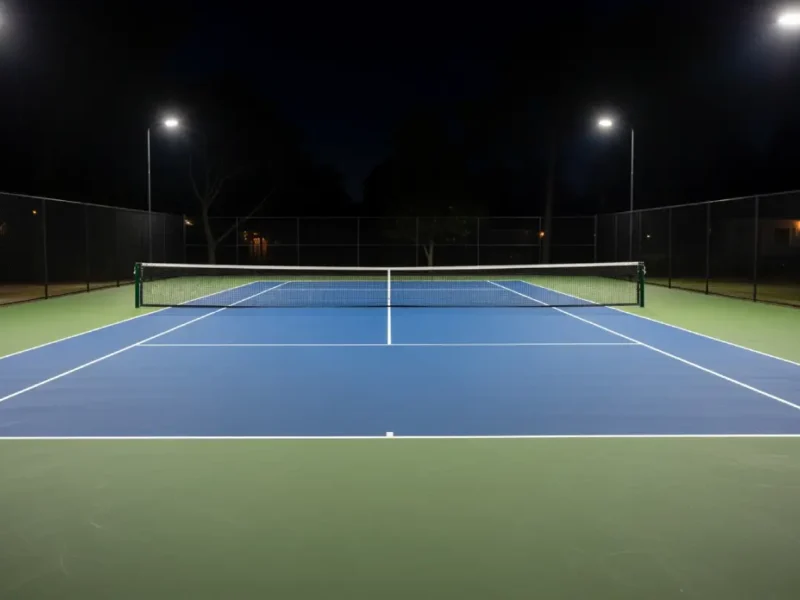Luxury residential communities have witnessed a significant evolution over the past decade. Not long ago, granite countertops and rooftop terraces were enough to conjure the image of high-end living, but today’s sophisticated residents seek far more. They’re not only looking for elegant finishes or “wow factor” amenities—they desire a living environment where comfort and convenience are omnipresent and service truly makes daily life feel special.
Now, luxury is built on holistic experience, where every touch point has been thoughtfully considered and every need anticipated—even those residents might not consciously notice. For instance, those searching for luxury apartments in Uptown Chicago increasingly ask about tech-enabled conveniences, community wellness programs, pet-friendly policies, and effortless connectivity inside and beyond their building. The modern luxury resident wants their home to be a sanctuary that welcomes them after a busy day and an inspiring space that fuels creativity, connection, and personal well-being.
True luxury also means a sense of belonging and a pride of place. Residents want to feel welcomed as occupants and as valued members of a thoughtfully designed neighborhood. This elevated comfort level is not the result of lavishness alone but the invisible layer of consideration that goes into sound insulation, air quality, security, and personal touches. When these factors come together, the result is a community that feels alive, supportive, and harmonious—a place residents are proud to call home.
Contents
- 1 The Role of Amenities in Creating Comfort
- 2 Service Excellence: The Heart of True Luxury
- 3 Design, Architecture, and the Feeling of Home
- 4 Wellness and Lifestyle Integration
- 5 Building Community: Social Spaces and Experiences
- 6 Location, Accessibility, and the Urban Edge
- 7 Sustainability and Smart Living
- 8 Resident Stories: What Real People Value
The Role of Amenities in Creating Comfort
For good reason, amenities are frequently the first item that potential renters or purchasers see. They help define the tone of a community, set a building apart from its peers, and function as seamless extensions of individual living spaces. But in truly luxurious environments, amenities go far beyond a list of features—they’re dynamic, regularly updated, and tailored to the lifestyles of diverse residents.
In leading luxury buildings, you’ll find wellness-focused fitness centers that feel like private health clubs, yoga, and meditation rooms open around the clock, and gathering spots as inviting as exclusive lounges. These spaces aren’t just well-designed—they’re carefully maintained, inviting, and always ready for impromptu use.
Residents enjoy the comfort of taking a morning swim in a resort-style pool or working remotely from a well-equipped business center with complimentary coffee and high-speed internet. Dedicated dog runs and grooming stations are now essential for pet lovers, reflecting the community’s inclusivity for every household member.
In recent years, smart technology has redefined luxury. Digital package lockers, touchless entryways, and app-based amenity booking systems create a streamlined routine. Services like dry cleaning pickup, personal fitness trainers, or group cooking classes are increasingly common, turning everyday activities into pleasurable rituals. The most successful residential communities curate amenities not just for show but for real day-to-day utility, helping residents reclaim time and enhance work-life balance every season.
Service Excellence: The Heart of True Luxury
Any discussion of luxury is incomplete without highlighting service—the human element that turns structural quality into a living, breathing culture. In luxury communities, staff are trained to anticipate needs, greet residents by name, and offer warm, authentic hospitality. This level of attention permeates every interaction, from security and maintenance teams to cleaning staff and concierge personnel. When service is well-executed, residents never feel like a number; their individuality and preferences are respected.
Concierge services have been reimagined for the contemporary resident. In addition to traditional assistance with reservations, residents may have access to errand running, grocery storage, car charging setup, or even event planning support. Communities offering round-the-clock maintenance with quick fix times reduce stress, eliminate recurring hassles, and empower residents to focus on what matters in their lives.
Security is another crucial form of service that fosters genuine peace of mind. Secure package rooms, visible yet approachable security staff, and robust access control systems ensure safety without sacrificing a welcoming demeanor. Residents feel cared for and free to enjoy all the amenities and common areas without concern.
Design, Architecture, and the Feeling of Home
The look, feel, and flow of a residential community have an enormous impact on how luxurious it seems—and on the mood and daily satisfaction of those who live there. Modern architecture emphasizes open layouts, expansive windows, and the use of natural materials to create beautiful and calming spaces. Sunlight is carefully considered in every unit. Living areas, bedrooms, and common spaces are all designed to receive ample light, connecting residents to the outdoors and enhancing well-being.
Attention to detail is evident in high-end finishes—quartz or marble counters, tiled backsplashes, hardwood or luxury vinyl flooring, and soft-close cabinets. Quality appliances blend into their surroundings, while thoughtful built-in storage options encourage tidiness and comfort. Acoustics matter, too: excellent sound insulation ensures privacy in bustling city environments, and mood lighting adapts to the time of day. Private balconies, garden courtyards, and rooftop terraces allow residents to retreat and unwind, making dense urban life feel spacious and open.
According to Architectural Digest, design-forward communities increasingly collaborate with top designers and architects to produce emotionally healing environments that are visually ageless and useful. When universal accessibility is prioritized, everyone feels completely at home, regardless of age or ability.
Wellness and Lifestyle Integration
Wellness is no longer just a trend in upscale living—it is a core pillar of what sets luxury apart in the eyes of many residents. The desire for accessible fitness facilities, spa experiences, and restorative outdoor spaces continues to rise nationwide. On-site wellness centers make it easy for residents to prioritize health, and luxury buildings often supplement these offerings with saltwater pools, massage rooms, or relaxation lounges.
Air and water quality are also increasingly in focus. Filtration systems, natural cleaning products, healthy food options, and circadian lighting deepen the sense of well-being. As highlighted by the Forbes Real Estate Council, top-tier communities provide opportunities for residents to participate in group fitness classes, wellness seminars, and healthy cooking demonstrations—a holistic approach to happiness and longevity.
Mental wellness also receives attention, with dedicated meditation rooms, calming garden spaces, and programming focused on mindfulness or stress reduction. The best communities create environments where every resident feels energized and grounded, with resources available for socializing and personal renewal.
Building Community: Social Spaces and Experiences
A sense of community plays a vital role in luxurious living. Shared lounges, indoor and outdoor kitchens, rooftop terraces, and event spaces foster organic connections between residents. Planned programming, such as movie nights, wine tastings, family gatherings, or educational workshops, brings neighbors together, turning a place to live into a true home.
A genuine community is built on intentional design and thoughtful management. For example, co-working rooms support remote workers’ needs while serving as casual gathering spaces for creative collaborations. Pet-friendly amenities foster interactions between animal lovers, while gardens and rooftop farms give urban dwellers a connection to nature and a reason to gather.
Residents who feel included, appreciated, and connected are likelier to engage with their surroundings and care for their living spaces. This engagement, more than lavish amenities, keeps turnover rates low and satisfaction consistently high. Luxury, ultimately, is about feeling surrounded by supportive relationships and opportunities for meaningful social connection.
Location, Accessibility, and the Urban Edge
No matter how beautiful a building, location remains a decisive factor in creating lasting luxury appeal. The best communities situate residents in vibrant neighborhoods with easy access to cultural destinations, fine dining, parks, and public transportation. By lowering the need for lengthy journeys, promoting daily exploration, and improving the quality of city life, walkable neighborhoods promote healthier, more sustainable lifestyles.
Accessibility and flow are key within the building itself. Wide hallways, well-placed elevators, intuitive parking, and barrier-free entryways make navigating simple for residents and guests. Charging stations for electric vehicles, secure bike storage, and effective wayfinding signage reflect attention to modern priorities.
These details add tremendous value, helping people feel empowered and at ease when they arrive. The “urban edge” is more than proximity—it’s about resonance with city life’s pace, diversity, and energy. The right balance of privacy and connection helps residents feel rooted and inspired.
Sustainability and Smart Living
Sustainability is now intrinsically linked to luxury. Increasingly, high-end communities are setting standards not only for comfort but for eco-conscious living. Features like solar panels, green roofs, recycled building materials, and efficient HVAC systems are standard developments in responsible new construction. Measurable resource consumption reductions are produced via resident recycling initiatives, low-emission lighting, and energy and water-saving equipment.
Smart home technology has become a defining hallmark. Residents use phone apps to adjust lighting, set thermostats, monitor their water use, and receive package delivery alerts. This real-time control enables customization and efficiency like never before. As outlined by the EPA’s overview of green home concepts, these advancements drive down utility costs, lower environmental impact, and attract residents who care about quality and responsibility. For the rising generation of luxury dwellers, green credentials are not just preferred; they are expected.
A focus on sustainability also fosters community pride and resilience. Residents find additional meaning in supporting green initiatives, whether composting, community gardening, or advocating for further eco-friendly enhancements. Everyone benefits from cleaner air, lower bills, and a heightened sense of shared purpose.
Resident Stories: What Real People Value
Ultimately, the most credible measure of luxury isn’t marketing copy or even amenities—but residents’ voices. Many long-term residents highlight things like speedy repairs, staff who go above and beyond, and unexpected moments of care—such as pet sitters checking in or concierge teams remembering birthdays. These small experiences create deep loyalty and authentic happiness.
In recent interviews compiled by The New York Times, people repeatedly emphasized the value of respectful, creative, and diverse communities, describing neighborhoods where they felt genuinely known and welcomed. Residents frequently mention a sense of calm, order, and an ability to form meaningful connections—whether through planned social events or spontaneous encounters in communal spaces.
Over time, the true luxury in a residential community is about living with ease and authenticity. Residents are able to personalize their routines, express themselves through home customization, and experience both indulgence and empowerment every day. This holistic satisfaction is what makes upscale communities stand out—and creates the sense of home that so many are seeking.



